Microcontroller is a control device that contains a number of peripherals like RAM, ROM TIMERS, serial data communication, etc., which are required to perform some pre-defined tasks. Nowadays, advanced type of microcontrollers
are used in a wide variety of applications as per their capability and
feasibility to perform some desired tasks and these controllers include 8051, AVR and PIC microcontroller. In this article, we are going to learn about advanced AVR family microcontroller and its programming.
AVR Microcontroller
The AVR is a type of controlling device
manufactured by the Atmel Corporation in 1996. The AVR does not stand
for anything, it is just a name. The AVR microcontrollers consist of the Harvard architecture,
and therefore, the device run very fast with a reduced number of
machine level instructions (RISC). The AVR microcontrollers consist of
special features compared with other microcontroller such as 6-sleep
modes, inbuilt ADC, internal oscillator and serial data communication,
etc. The AVR microcontrollers are available in different configurations of 8-bit, 16-bit, and 32-bit to perform various operations.
USART Serial Data Communication in AVR Microcontroller
The USART stands for universal
synchronous and asynchronous receiver and transmitter. It is a serial
communication of two protocols. This protocol is used for transmitting
and receiving the data bit by bit with respect to clock pulses on a
single wire. The AVR microcontroller
has two pins: TXD and RXD, which are specially used for transmitting
and receiving the data serially. Any AVR microcontroller consists of
USART protocol with its own features.
- The USART protocol supports the full-duplex protocol.
- It generates high resolution baud rate.
- It supports transmitting serial data bits from 5 to 9 and it consists of two stop bits.
USART Pin Configuration
The USART of AVR consists of three Pins:
- RXD: USART receiver pin (ATMega8 PIN 2; ATMega16/32 Pin 14)
- TXD: USART transmitter pin (ATMega8 PIN 3; ATMega16/32 Pin 15)
- XCK: USART clock pin (ATMega8 PIN 6; ATMega16/32 Pin 1)
Modes of Operation
The AVR microcontroller of USART protocol operates in three modes which are:
- Asynchronous Normal Mode
- Asynchronous Double Speed Mode
- Synchronous Mode
Asynchronous Normal Mode
In this mode of communication, the data
is transmitted and received bit by bit without clock pulses by the
predefined baud rate set by the UBBR register.
Asynchronous Double Speed Mode
In this mode of communication, the data
transferred at double the baud rate is set by the UBBR register and set
U2X bits in the UCSRA register. This is a high-speed mode for
synchronous communication for transmitting and receiving the data
quickly. This system is used where accurate baud rate settings and
system clock are required.
Synchronous Mode
In this system, transmitting and receiving the data with respect to clock pulse is set UMSEL=1 in the UCSRC register.
USART Configuration In AVR microcontroller
USART can be configured using five registers such as three control registers, one data register and baud-rate-selection register, such as UDR, UCSRA, UCSRB, UCSRC and UBRR.
7 Steps for Composing the Program
Step1: Calculate and Set the Baud Rate
The baud rate of USART/UART is set by
the UBRR registrar. This register is used to generate the data
transmission at the specific speed. The UBRR is a 16-bit register. Since
the AVR is a 8-bit microcontroller and its any register size is 8-bit.
Hence, here the 16-bit UBRR register is composed of two 8-bit registers
such as UBRR (H), UBRR(L).
The formula of the baud rate is
BAUD= Fosc/(16*(UBBR+1))
The formula of the UBRR register is
UBRR= Fosc/( 16*(BAUD-1))
The frequency of the AVR microcontroller is 16MHz=16000000; Let us assume the baud rate as 19200Bps, then
UBRR= 16000000/(16*(19200-1))
UBRR= 16000000/(16*(19200-1))
UBRR= 51.099
Eventually find the baud rate
BAUD= 16000000/( 16*(51+1))
UBRR= 19230bps
UBRR= 19230bps
Step2: Data Mode Selection
The data transmission mode, start bit and stop bit and the character size is set by the control and status register UCSRC.
The synchronous and asynchronous mode is
selected by the UMSEL bit of the control status register. If we give
UMSEL=0, then the USART operates in asynchronous mode, otherwise
operates in synchronous mode.
Step4: Start Bit and Stop Bit
The start bit and stop bits are a way
for sending and receiving the data serially. Generally any data fame
consists of one stat bit and one stop bit, but the AVR microcontroller
has one start bit and two stop bits for processing the data. The extra
stop bit can be useful for adding a little extra receive processing
time. It is especially useful for high data transfer rates, whereas the
data transfer speed is very high, so we don’t get proper data. Thus, we
can increase the processing time by using two stop bits to get the
proper data.
The number of stop bits is selected by
the USBS bit of UCSRC – the control status register. The USBS=0, for one
stop bit, and USBS=1, for two stop bits.
As in case with the basic microcontrollers
sending and receiving the byte of data(8-bits) at a time, whether in a
AVR microcontroller, we can choose a data frame format in each frame by
the UCSZ bit of the UCSRC register.
Step6: Store the Received Data
The AVR microcontroller consists of a
UDR buffer register for transmitting and receiving data. The UDR is a
16-bit buffer register wherein 8-bits are used for receiving (RXB) the
data and other bits are used for transmitting the data (TXB).
Transmitting data buffer register will be the destination to UDR
register for the written data on its location. Receiving data buffer
register will be returning the content of the UDR register.
Step7: Transmitter and Receiver Enabling
The transmitted and received data will
be allowed by the RXC and TXC pins of the microcontroller which are set
by the UCSRA register of the microcontroller. This flag bit set by the
microcontroller for the data is completed by receiving and transmitting
(TXC=RXC=1).
Double the Baud Rate
We can double the transfer rate of the USART communication of the AVR microcontroller from 16 bits to 8-bits
effectively by the U2X –bit in the UCSRA register. This bit effects
only on asynchronous operation. If we can set this bit (U2X=1), it will
reduce the baud rate from 16-bit to 8-bit effectively doubling the
transfer rate for synchronous communication.
This is an advanced feature of the AVR microcontroller for speedy processing of the data.
USART Program
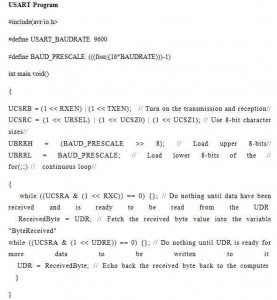
Every microcontroller is predefined with a specific IDE, and based on this IDE, microcontrollers are programmed with embedded C
or assembly language. The AVR microcontroller programming is developed
by the AVR studio. Furthermore, If you want additional information about
the steps to build microcontroller based projects, or detailed information on this topic, you can contact us by commenting below.



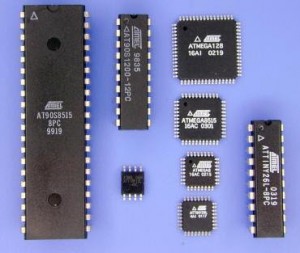

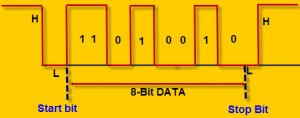

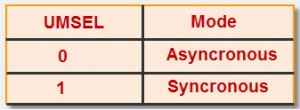
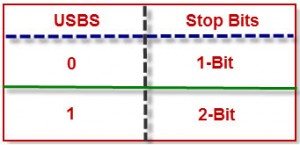
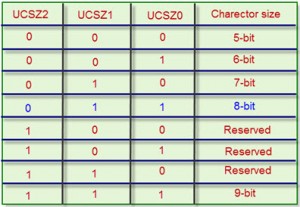





No comments:
Post a Comment